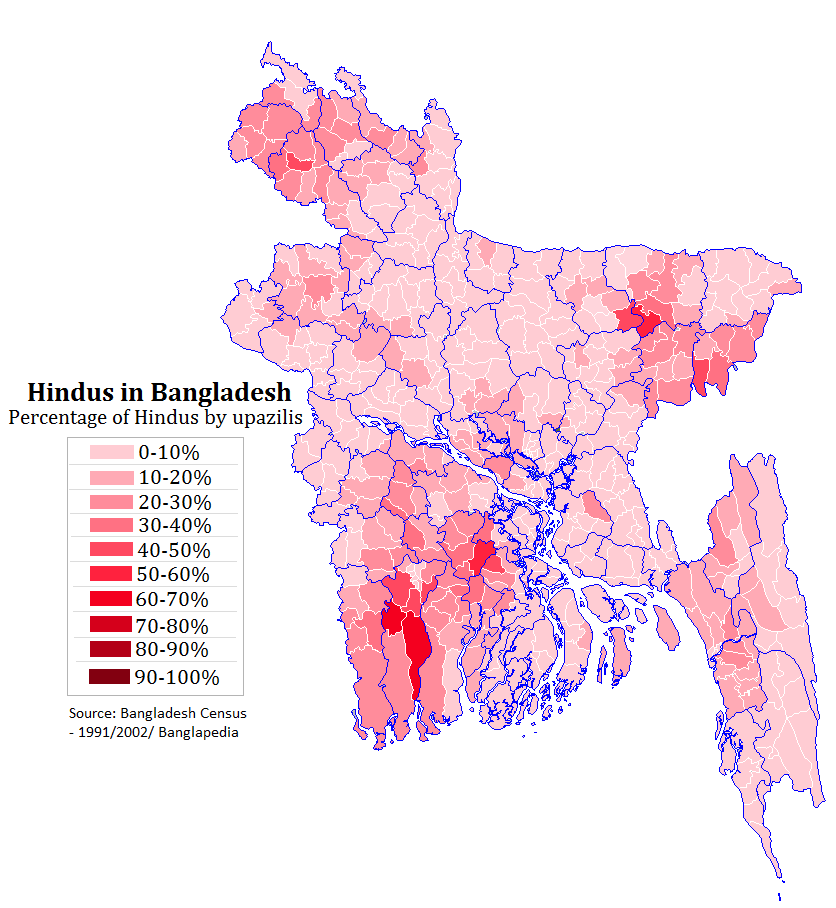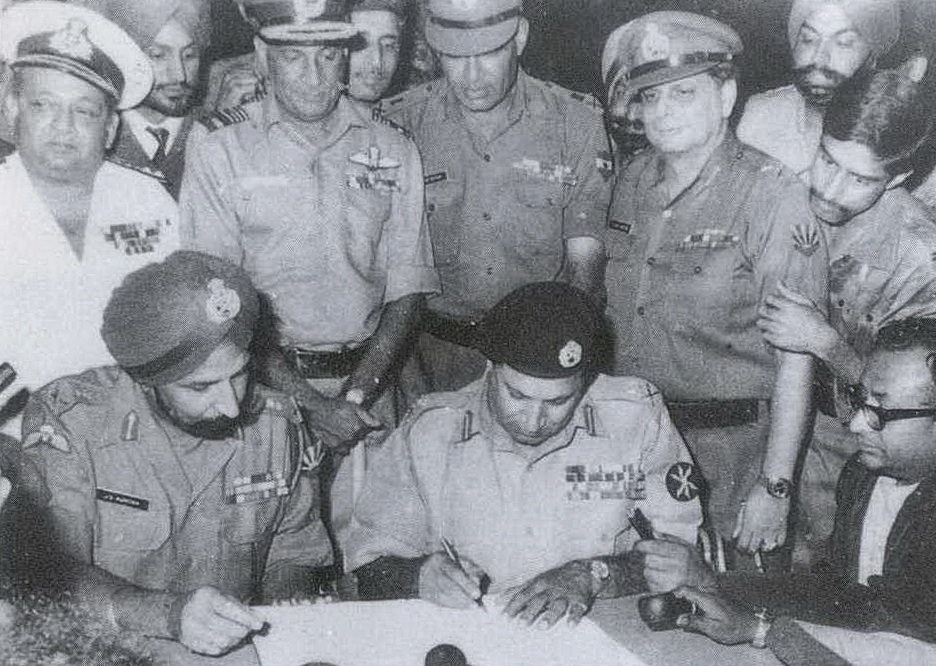|
Akhaura
Akhaura () is an upazila of Brahmanbaria District, a district under Chattogram, Bangladesh. Akhaura Upazila has an area of 99.28 km2. The main river that run through this upazila is the Titas River. Akhaura played an important historical role during both World War II and Liberation War of Bangladesh. The administration of Akhaura thana, now an upazila, was established in 1976. The upazila includes one municipality, five union parishads, 102 mouzas and 112 villages. History During the Indo-Pakistani War of 1971 for the liberation of Bangladesh, Pakistan Army planners predicted India would launch its main attack in the east along the Akhaura– Brahmanbaria axis; however, the army had no troops in this area, so the 27th brigade at Mymensingh was moved to Akhaura, except for two battalions (which became the 93rd brigade) that were retained for the defence of Mymensingh. Pakistan Army's 93,000 troops unconditionally surrendered to the Indian Army and India's local ally Mu ... [...More Info...] [...Related Items...] OR: [Wikipedia] [Google] [Baidu] |
Brahmanbaria District
Brahmanbaria District () is a district in eastern Bangladesh located in the Chittagong Division. Geographically, it is mostly farmland and is topographically part of the Gangetic Plain. It is bounded by the districts of Kishoreganj District, Kishoreganj and Habiganj District, Habiganj to the north, Narsingdi District and Narayanganj District, Narayanganj to the west, Comilla District, Comilla to the south, and the Indian state of Tripura to the east. It was a part of Comilla District until 15 February 1984.Musa, Muhammad. Brahmanbariar Itibrittyo, Shetu Prokashoni, Brahmanbaria,1998. History Brahmanbaria was a part of Samatata region of ancient Bengal. The area Syed Mahmud resided in was named Kazipara (Kazi being a variant of Qadi) after him, and his mazar (mausoleum) remains there. The leader of the Baro-Bhuiyan zamindars, Isa Khan, had his first and temporary capital situated in Sarail Upazila, Sarail. Brahmanbaria was made part of the Sylhet Sarkar. During the Mughal era, B ... [...More Info...] [...Related Items...] OR: [Wikipedia] [Google] [Baidu] |
Kharampur Mazar Sharif
Kharampur Mazar Sharif is a mazar (mausoleum) in the village of Kharampur, Akhaura Upazila, Brahmanbaria District, Bangladesh. It is built on the burial ground of Syed Ahmad Gesudaraz.Amer Hossain, History of Brhamanbaria, pp.186. The structure stands on of land. Festivals A village fair is held every year in Kharampur Mazar Sharif during the Urs Urs (from ''‘Urs'') or Urus (literal meaning wedding), is the death anniversary of a Sufi saint, usually held at the saint's dargah (shrine or tomb). In most Sufi orders such as Naqshbandiyyah, Suhrawardiyya, Chishtiyya, Qadiriyya, etc. ... period.Brhamanbaria Society; Shattsoto Brhamanbaria; p.52. References {{Brahmanbaria District Mausoleums in Bangladesh Brahmanbaria District ... [...More Info...] [...Related Items...] OR: [Wikipedia] [Google] [Baidu] |
Upazilas Of Bangladesh
An ''upazila'' ( pronounced: ), formerly called ''thana'', is an administrative division in Bangladesh, functioning as a sub-unit of a districts of Bangladesh, district. It can be seen as an analogous to a county or a borough of Western countries. Rural upazilas are further administratively divided into Union councils of Bangladesh, union council areas (union parishads). Bangladesh has 495 upazilas. The upazilas are the second lowest tier of regional administration in Bangladesh. The administrative structure consists of divisions (8), districts (64), upazilas (495) and union parishads (UPs). This system of devolution was introduced by the former military ruler and president of Bangladesh, Hossain Mohammad Ershad, Lt-Gen Hossain Muhammad Ershad, in an attempt to strengthen local government. Below UPs, villages (''gram'') and ''para'' exist, but these have no administrative power and elected members. The Local Government local ordinance, Ordinance of 1982 was amended a year lat ... [...More Info...] [...Related Items...] OR: [Wikipedia] [Google] [Baidu] |
Upazila
An ''upazila'' ( pronounced: ), formerly called ''thana'', is an administrative division in Bangladesh, functioning as a sub-unit of a district. It can be seen as an analogous to a county or a borough of Western countries. Rural upazilas are further administratively divided into union council areas (union parishads). Bangladesh has 495 upazilas. The upazilas are the second lowest tier of regional administration in Bangladesh. The administrative structure consists of divisions (8), districts (64), upazilas (495) and union parishads (UPs). This system of devolution was introduced by the former military ruler and president of Bangladesh, Lt-Gen Hossain Muhammad Ershad, in an attempt to strengthen local government. Below UPs, villages (''gram'') and ''para'' exist, but these have no administrative power and elected members. The Local Government Ordinance of 1982 was amended a year later, redesignating and upgrading the existing ''thanas'' as ''upazilas''. History Upa ... [...More Info...] [...Related Items...] OR: [Wikipedia] [Google] [Baidu] |
2011 Bangladesh Census
In 2011, the Bangladesh Bureau of Statistics conducted a national census in Bangladesh, which provided a provisional estimate of the total population of the country as 142,319,000. The previous decennial census was the 2001 census. Data were recorded from all of the districts and upazilas and main cities in Bangladesh, including statistical data on population size, households, sex and age distribution, marital status, economically active population, literacy and educational attainment, religion, number of children etc. Bangladesh and India also conducted their first joint census of areas along their border in 2011. According to the census, Hindus constituted 8.5 per cent of the population as of 2011, down from 9.6 per cent in the 2001 census. Bangladesh has a population of 144,043,697 as per the 2011 census report. The majority of 130,201,097 reported that they were Muslim, 12,301,331 reported as Hindu, 864,262 as Buddhist, 532,961 as Christian and 201,661 as others. See als ... [...More Info...] [...Related Items...] OR: [Wikipedia] [Google] [Baidu] |
Hinduism In Bangladesh
Hinduism is the second largest religion in Bangladesh, as according to the 2022 Census of Bangladesh, approximately 13.1 million people responded as Hindus, constituting 7.95% of the nation. Bangladesh is the third-largest Hindu populated country in the world, after India and Nepal. Hinduism is the Religion in Bangladesh, second-largest religion in 61 of 64 districts in Bangladesh, but there are no Hindu majority districts in Bangladesh. Demographics According to the 2001 Bangladesh census, there were around 11.82 million Hindus in Bangladesh constituting 9.6% of the population, which at the time was 123.15 million. The 2011 Bangladesh census, Bangladesh 2011 census states, that approximately 12.73 million people responded that they were Hindus, constituting 8.54% of the total 149.77 million. While 2022 Census of Bangladesh, put the number of Hindus in Bangladesh at 13.1 million out of total 165.1 million population, thus constituting 7.95% of the population. According to ... [...More Info...] [...Related Items...] OR: [Wikipedia] [Google] [Baidu] |
Islam In Bangladesh
Islam is the largest and the state religion of the People's Republic of Bangladesh. According to the 2022 census, Bangladesh had a population of about 150 million Muslims, or 91.04% of its total population of million. Muslims of Bangladesh are predominant native Bengali Muslims. The majority of Bangladeshis are ''Sunni'', and follow the '' Hanafi'' school of ''Fiqh''. Bangladesh is a ''de facto'' secular country. The Bengal region was a supreme power of the medieval Islamic East. In the late 7th century, Muslims from Arabia established commercial as well as religious connection within the Bengal region before the conquest, mainly through the coastal regions as traders and primarily via the ports of Chittagong. In the early 13th century, Muhammad bin Bakhtiyar Khalji conquered Western and part of Northern Bengal and established the first Muslim kingdom in Bengal. During the 13th century, Sufi missionaries, mystics and saints began to preach Islam in villages. The Islamic ... [...More Info...] [...Related Items...] OR: [Wikipedia] [Google] [Baidu] |
Vijay Diwas (India)
Victory Day () is a national holiday in Bangladesh celebrated on 16 December to commemorate the defeat of the Pakistan Armed Forces in the Bangladesh Liberation War in 1971 and the Independence of Bangladesh. It commemorates the Pakistani Instrument of Surrender, wherein the commander of the Pakistani Forces, General A. A. K. Niazi, surrendered to Lieutenant General Jagjit Singh Aurora, Joint Commander of Indian and Bangladesh Forces, ending the nine-month Bangladesh Liberation War and 1971 Bangladesh genocide and marking the official secession of East Pakistan to become the new state of Bangladesh. This day and event is also commemorated across India as the "Vijay Diwas" () for the victory in Indo-Pakistani war of 1971 aftermath of Bangladesh liberation. History In 1971, Bangladesh fought the Bangladesh Liberation War against Pakistan to become an Independent country, which resulted in the secession of East Pakistan from the Islamic Republic of Pakistan and estab ... [...More Info...] [...Related Items...] OR: [Wikipedia] [Google] [Baidu] |
Mukti Bahini
The Mukti Bahini, initially called the Mukti Fauj, also known as the Bangladesh Forces, was a big tent armed guerrilla resistance movement consisting of the Bangladeshi military personnel, paramilitary personnel and civilians during the Bangladesh War of Independence that transformed East Pakistan into Bangladesh in 1971. On 7 March 1971, Sheikh Mujibur Rahman, the undisputed leader of then East Pakistan, issued a call to the people of East Pakistan to prepare themselves for an all-out struggle. Later that evening resistance demonstrations began, and the West Pakistani military began a full-scale retaliation with Operation Searchlight in the early hours of 26 March 1971, which continued through May 1971. Before his arrest on 26 March, East Pakistani leaders declared the independence of Bangladesh, and ordered the people to engage in all-out war. A formal military leadership of the resistance was created in April 1971 under the Provisional Government of Bangladesh. Th ... [...More Info...] [...Related Items...] OR: [Wikipedia] [Google] [Baidu] |
Indian Army
The Indian Army (IA) (ISO 15919, ISO: ) is the Land warfare, land-based branch and largest component of the Indian Armed Forces. The President of India is the Commander-in-Chief, Supreme Commander of the Indian Army, and its professional head is the Chief of the Army Staff (India), Chief of the Army Staff (COAS). The British Indian Army, Indian Army was established on 1 April 1895 alongside the long established presidency armies of the East India Company, which too were absorbed into it in 1903. Some princely states maintained their own armies which formed the Imperial Service Troops which, along with the Indian Army formed the land component of the Armed Forces of the Crown of India, responsible for the defence of the Indian Empire. The Imperial Service Troops were merged into the Indian Army after Independence of India, independence. The units and regiments of the Indian Army have diverse histories and have participated in several battles and campaigns around the world, earnin ... [...More Info...] [...Related Items...] OR: [Wikipedia] [Google] [Baidu] |


